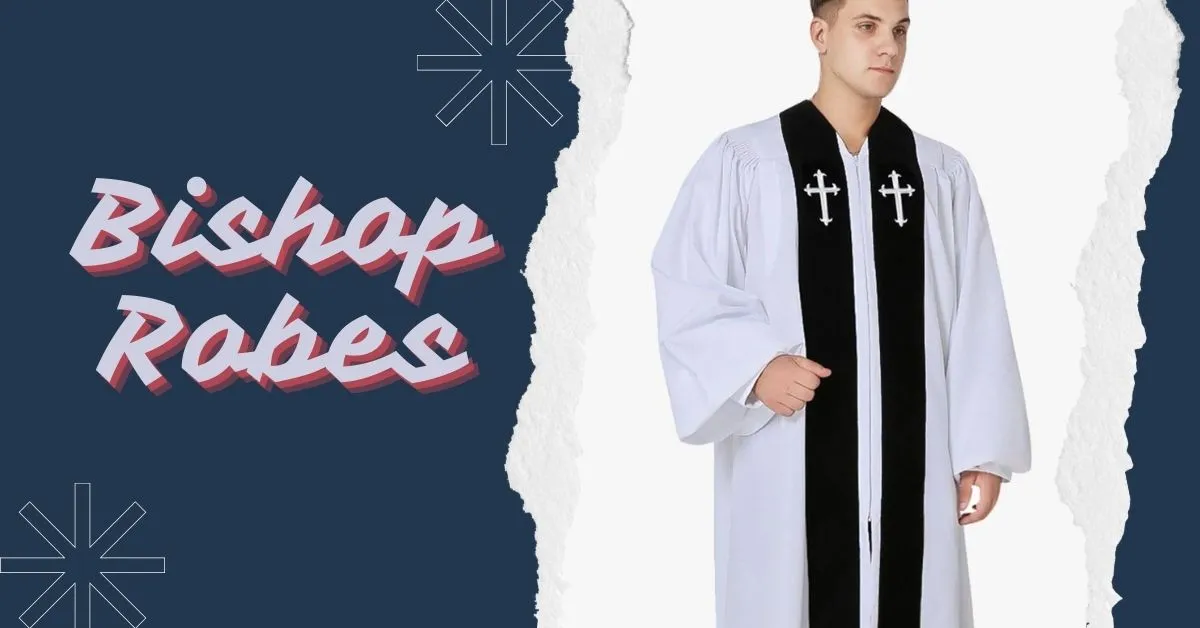Bishop Robes Tradition Significance and Modern Adaptations
Bishop robes hold a special place as one of the most recognizable and symbolic garments in Christian denominations. These elaborate vestments are not merely articles of clothing but are deeply intertwined with the history, tradition, and theology of the Church. This article delves into the multifaceted aspects of bishop robes, exploring their historical origins, theological significance, debate over tradition versus necessity, modern adaptations, cultural influences, and the future outlook of clerical attire.
Historical Origins of Bishop Robes
- Early Christian Attire
The history of bishop robes can be traced back to the early centuries of Christianity when bishops and clergy initially wore attire similar to that of the average Roman citizen. Simple garments like tunics and palliums were commonplace among early Christian leaders, reflecting their modesty and practicality. However, as the Christian church began to institutionalize and gain prominence, distinctions between clergy and laity became more pronounced. This evolution led to the development of distinct vestments for bishops, marking their elevated status within the Church hierarchy.
- Medieval Developments
The medieval period witnessed significant developments in bishop robes, transforming them into ornate and highly symbolic garments. New liturgical vestments such as the chasuble, mitre, and cope were introduced during this era. Each of these vestments carried profound religious and ceremonial meanings, serving not only as symbols of the bishop’s authority but also as reflections of the splendor and grandeur of the church. The ornateness of these robes emphasized the sacredness of the clergy’s role in conducting religious rituals and ceremonies.
Theological Significance of Bishop Robes
- Symbolism and Sacrality
Bishop robes are laden with rich symbolism that enhances their theological significance. For example, the mitre, a distinctive hat worn by bishops, symbolizes the tongues of fire that descended upon the Apostles at Pentecost, signifying the impartation of the Holy Spirit. The stole, another essential vestment, symbolizes the yoke of Christ, underscoring the bishop role as a servant leader within the Christian community. Each element of the bishop’s attire is meticulously designed to convey profound spiritual messages to both clergy and congregants, reinforcing their shared commitment to faith and service.
- Liturgical Functions
In the context of liturgical worship, bishop robes play a crucial role in enhancing the solemnity and reverence of religious services. The specific colors and designs of the vestments correspond to various liturgical seasons and occasions, aligning with the rhythms of the church calendar. This deliberate use of attire underscores the sacredness of the liturgy and visually connects worshippers to the spiritual themes and narratives embedded within Christian traditions. The robes thus serve not only as outer garments but as conduits for spiritual reflection and communal worship experiences.
Bishop Robes Tradition or Necessity?
- Tradition and Continuity
The debate over whether bishop robes are a tradition or a necessity hinges on their role in preserving historical continuity within the Church. These vestments serve as tangible links to centuries of religious heritage and practice, embodying the rituals and customs passed down through generations. By maintaining the tradition of wearing bishop robes, the Church underscores its commitment to honoring its past while imparting a sense of stability and identity to future generations of clergy and congregants alike.
- Practical Necessity
Beyond tradition, bishop robes fulfill practical functions within the ecclesiastical context. The distinct attire worn by bishops distinguishes them visually during liturgical services and public events, serving as a clear marker of their authority and role within the hierarchical structure of the Church. This visual symbolism helps to maintain order and clarity within the faith community, ensuring that the responsibilities and duties of bishops are readily identifiable and respected by all members.
Modern Priest Outfit A Shift in Attire?
- Contemporary Changes
In recent decades, there has been a noticeable shift toward more simplified and adaptable vestments for clergy, including bishops. The modern priest outfit seeks to strike a balance between honoring traditional aesthetics and meeting the practical needs of contemporary religious leaders and congregations. This shift reflects broader societal changes and evolving cultural norms, influencing how clergy present themselves while engaging with modern audiences.
- Balancing Tradition and Modernity
While some clergy continue to embrace traditional bishop robes, others opt for more contemporary attire such as clerical shirts and suits. This adaptation reflects a desire to remain relevant in an increasingly diverse and dynamic world while upholding core religious values. The challenge lies in finding a harmonious balance that respects the integrity of religious traditions while embracing the evolving needs and expectations of today’s globalized communities.
The Role of Culture in Shaping Clerical Attire
- Cultural Influences on Bishop Robes
Throughout history, bishop robes have been influenced by diverse cultural contexts, leading to variations in style, materials, and decorative motifs. Different regions and historical periods have left their imprint on the design and symbolism of these vestments, reflecting local customs and artistic sensibilities. This cultural adaptability has enabled the Church to foster connections with diverse communities while maintaining its overarching theological principles.
- Contemporary Cultural Shifts
In the contemporary era, cultural influences on clerical attire have become more pronounced than ever before. The modern priest outfit often incorporates elements from various cultural traditions, promoting inclusivity and diversity within the global Christian community. This blending of cultural aesthetics serves not only to enrich the visual diversity of clerical attire but also to foster a sense of unity and solidarity among believers worldwide.
The Impact of Modernization on Clerical Attire
- Technological Advancements
Advancements in textile technology and manufacturing have revolutionized the production of clerical attire, including bishop robes. These innovations have made it possible to create high-quality vestments that are both durable and aesthetically pleasing, meeting the rigorous demands of ecclesiastical use. Improved accessibility and affordability have also democratized access to clerical attire, enabling clergy to select garments that align with their personal preferences and ministry contexts.
- Changing Perceptions
Modernization has prompted a reevaluation of traditional norms surrounding clerical attire, challenging long-held perceptions of what constitutes appropriate religious dress. As societal norms evolve, clergy members are increasingly encouraged to adopt attire that reflects their individual identities while upholding the values and teachings of their faith traditions. This shift toward greater personalization and flexibility in clerical attire underscores the dynamic nature of religious practice in contemporary society.
The Future of Bishop Robes and Clerical Attire
- Adapting to Contemporary Needs
Looking ahead, the future of bishop robes and clerical attire will be shaped by ongoing discussions about tradition, relevance, and cultural adaptation. The Church must navigate these complexities thoughtfully, ensuring that its attire continues to resonate with clergy and congregants alike. This may involve exploring innovative designs and materials that enhance comfort and functionality without compromising the sacred significance of clerical vestments.
- Preserving Heritage
While embracing innovation, there will also be a continued emphasis on preserving the rich heritage associated with bishop robes and other clerical attire. Striking a balance between honoring the past and embracing the future will be essential in maintaining continuity within the Church’s traditions. By doing so, the Church can uphold its identity as a timeless institution while remaining responsive to the evolving needs of a diverse and globalized community of believers.
Conclusion
bishop robes embody a profound legacy of faith, tradition, and theological symbolism within the Christian Church. From their ancient origins to their contemporary adaptations, these vestments continue to serve as enduring symbols of spiritual authority and sacred duty. As the Church navigates the complexities of a rapidly changing world, the role of bishop robes and clerical attire remains pivotal in fostering spiritual connection, cultural inclusivity, and communal worship experiences. By embracing both tradition and innovation, the Church can ensure that its attire remains a meaningful expression of faith, identity, and reverence for generations to come.






